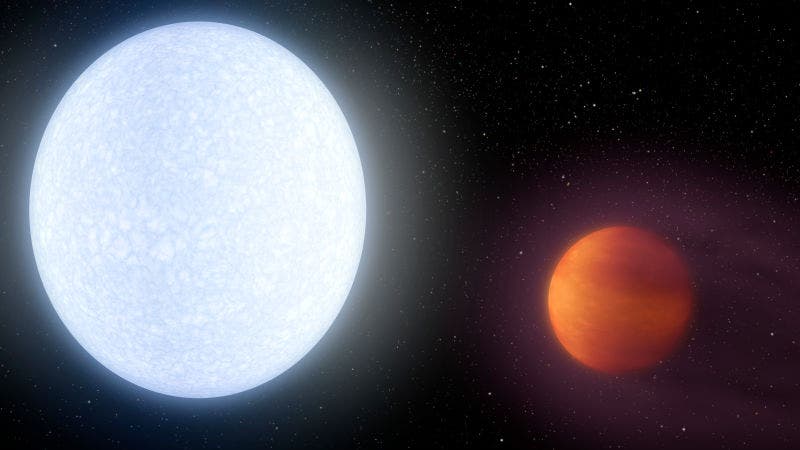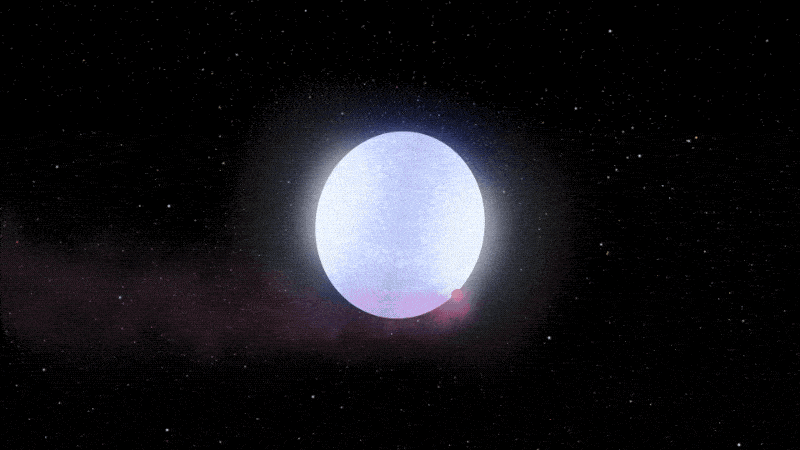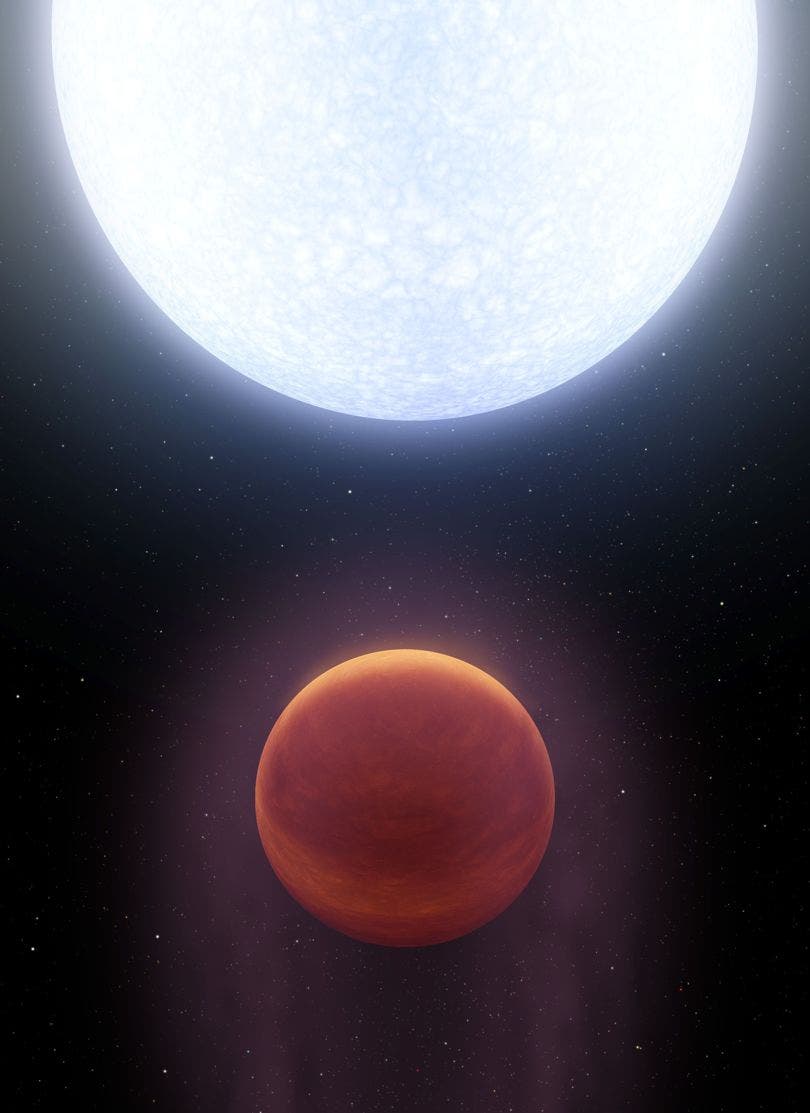Some 650 light-years away from Earth lies one of the hottest planet known to astronomers. Called KELT-9b, the planet’s temperature runs in excess of 4,300°C (7,700°F) or only 1,300°C short of our sun’s surface temperature. For comparison, Venus, the hottest planet in our solar system and common illustration of what hell ought to look like registers only about 460°C at its surface.

A planet hotter than most stars we know of
This extreme gas giant was first discovered in 2014 by scientists working with the Kilodegree Extremely Little Telescopes, or KELT for short. To find KELT-9b, researchers simply had to measure its parent star’s brightness as it dimmed when the exoplanet passed between the star and the telescope’s lens. These dips occurred extremely fast, about every 36 hours which means a year on KELT-9b only lasts about one and half days on Earth. No scientist must have expected to see absorption coefficients of molecules and atoms for exoplanets go beyond 3000 Kelvin, but here we are. That’s super extreme by many accounts. And that’s not all.
Unlike the planets of our solar system that all orbit around the sun’s equator, KELT-9b orbits around its parent star’s poles. It’s also tidally locked always facing its star with the same side like the moon does in relation to our planet. This means that the hottest part of the planet is the one facing the sun but the night-side is also very hot — hotter than Proxima Centauri, our nearest neighbor which has an exoplanet of its own.
The data from the observations was so flabbergasting that the researchers couldn’t tell at first whether this was a star or an exoplanet. Scott Gaudi, a professor of astronomy at Ohio State University, sided on the ‘this is a planet’ side and even made a bet with a colleague over a bottle of single-malt scotch which he apparently won.
So what would KELT-9b look like? Probably like Jupiter in a frying pan. At such extreme temperatures, molecular bonds are broken so everything is elemental atoms. There can’t be any methane, water vapor or CO2. The intense heat expands all this cloud of atomic gas like a soufflé — a world nearly three times more massive than Jupiter but only half as dense, as reported in the journal Nature.
“Its day side would be very bright orange. Its night side would be very dark red. And it would have a cloud of evaporating hydrogen and helium, which would actually look violet,” Gaudi told NPR.

That’s a very strange sight indeed, which is why some scientists are calling this a planet-star hybrid, with the important distinction that there is no nuclear fusion going on inside KELT-9b’s core. One wild hypothesis surrounding KELT-9b is it might have a tail akin to a comet’s, shedding hydrogen gas as it travels around its solar system. But that’s just a wild hypothesis that has no substantial proof to it whatsoever at this point. We might learn more if Gaudi and colleagues successful convince the right people to point the Hubble telescope at KELT-9b.

“KELT-9 radiates so much ultraviolet radiation that it may completely evaporate the planet. Or, if gas giant planets like KELT-9b possess solid rocky cores as some theories suggest, the planet may be boiled down to a barren rock, like Mercury,” co-author Keivan Stassun, professor of physics and astronomy at Vanderbilt, told Wired.
Whatever’s the case, KELT-9b shines brightly, almost like a star. It’s hotter than many K-type yellow-orange stars, after all. And as expected, it lives fast and dies young. It’s expected as KELT-9’s star runs out of hydrogen, it should cool and swell to three times its current size eating our hot tomato in the process. That’s in a billion years or so.
“As we seek to develop a complete picture of the variety of other worlds out there, it’s important to know not only how planets form and evolve, but also when and under what conditions they are destroyed,” said Stassun.
KELT-9 is certainly the hottest gas giant we’ve come across so far but it’s no the hottest exoplanet. That distinction belongs to Kepler 70b, a small, rocky planet with a surface temperature of 6,870 degrees Celsius (12,398 degrees F).






